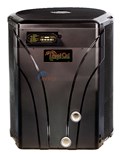
What is the difference between AquaCal's TropiCal line and their more expensive HeatWave SuperQuiet line?
Reply
The TropiCal is an economy heat pump designed to fit any budget. It is perfect for above-ground pools and small in-ground pools. At 55 dB, AquaCal's HeatWave SuperQuiet heat pumps are virtually silent from 10ft. away! All of our HeatWave SuperQuiet Heat Pumps are fully tested and certified by AHRI. Now, most of the HeatWave SuperQuiet models are ICEBREAKERS® - heat and cool! For more Information, please visit Aqualcal Tropical or Aqualcal Heatwave .
Reply
Specs say 60 amp breaker, question and answer says 50 amp. I ran into this same issue on the comparable Raypak model. Other sites say 50 amp needed. Can you please clarify required breakers?
Reply
Hello, These units require 60 amp breaker.
Reply
What size and type of electrical cables are required to run this unit?
Reply
Good Morning Jack, Hope you are doing well. I can tell you that you need two hot wires & a ground wire. You need a minimum of a 50 amp or maximum of a 60 amp breaker for the machine. Wire size has to be determined by an electrician on site as this depends on the full run of the wiring. Thanks, AquaCal Tech Support
Reply
My pool is 20ft. By 40 feet. How large would an AquaCal Tropical heat pump need to be versus a 400,00 Raypac Heater. I live on a mountain that is roughly 1900 ft. Above sea level in Unadilla NY. What do you believe would be the better heater for me?
Reply
Good Morning Lisa, Hope you are doing well. Assuming a pool season of Mid-May through September, the T135 heat pump would work well for your pool. In the beginning of the season & at the end, the unit will run about 19-20 hours a day to maintains 82 degrees. If you have any questions, please feel free to call AquaCal at 727-823-5642. Thanks Robert Brown AquaCal Tech Support
Reply
will i need a cement pad under the heater
Reply
Good Morning Mr. Tata, Hope you are doing well. Please see excerpt from installation manual. Mounting Pad Requirements The heat pump's base must be installed on a flat and level surface that completely supports the entire base. Build the heat pump pad out of concrete or other code-approved material. Confirm the pad can support the weight of the heat pump. See "Weights" Elevate the pad enough to allow for drainage. Make sure the pad is flat and level. Have the pad support the entire heat pump base in all directions. Do not install the heat pump on soil or grass. Do not allow the heat pump base to touch the building's foundation. Do not place the heat pump directly on a concrete floor. This can cause noise to be transmitted to an occupied space. If necessary install vibration dampers between the heat pump base and floor. Equipment pad must meet all requirements of authorities having code-related jurisdiction. Thanks, Robert
Reply